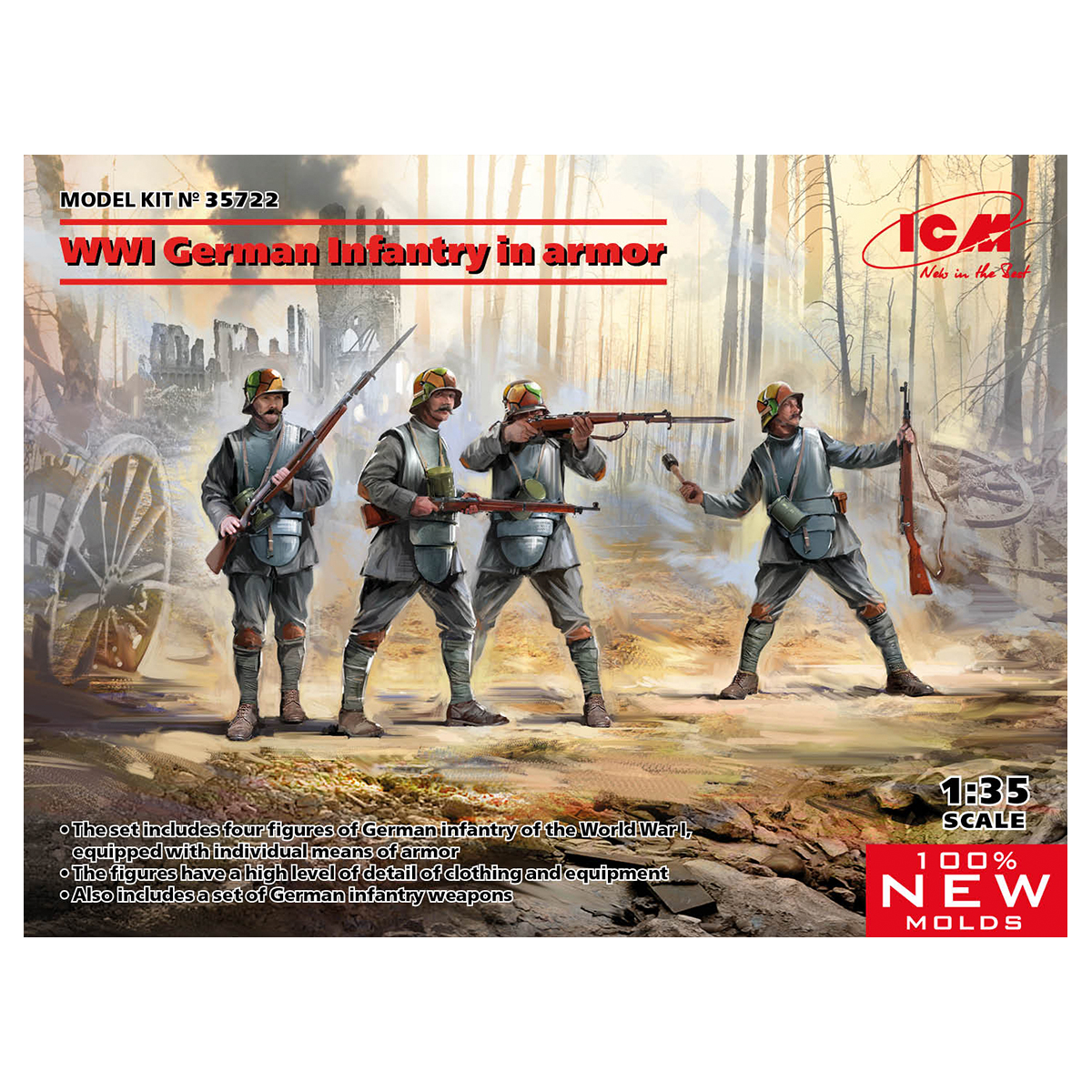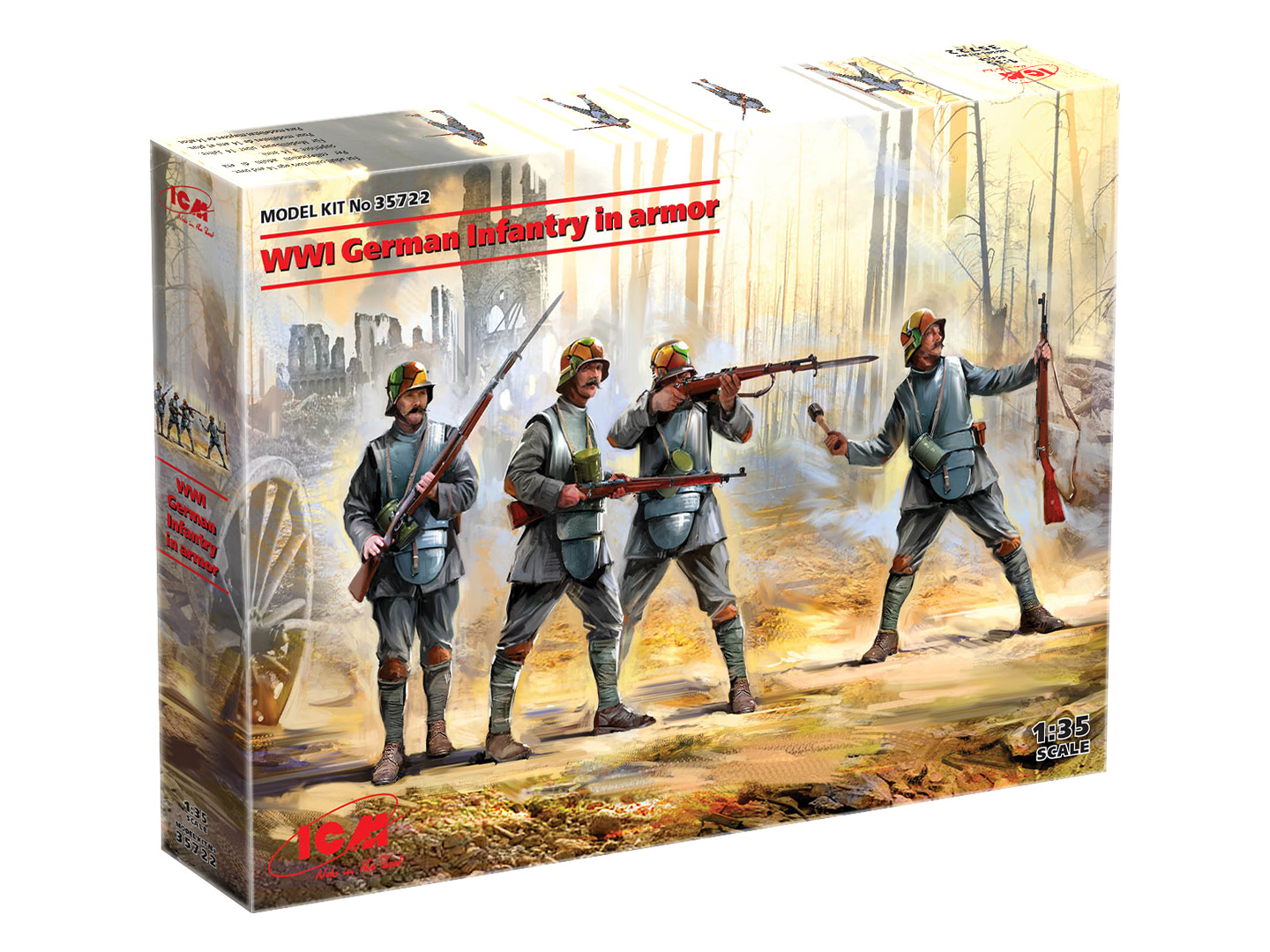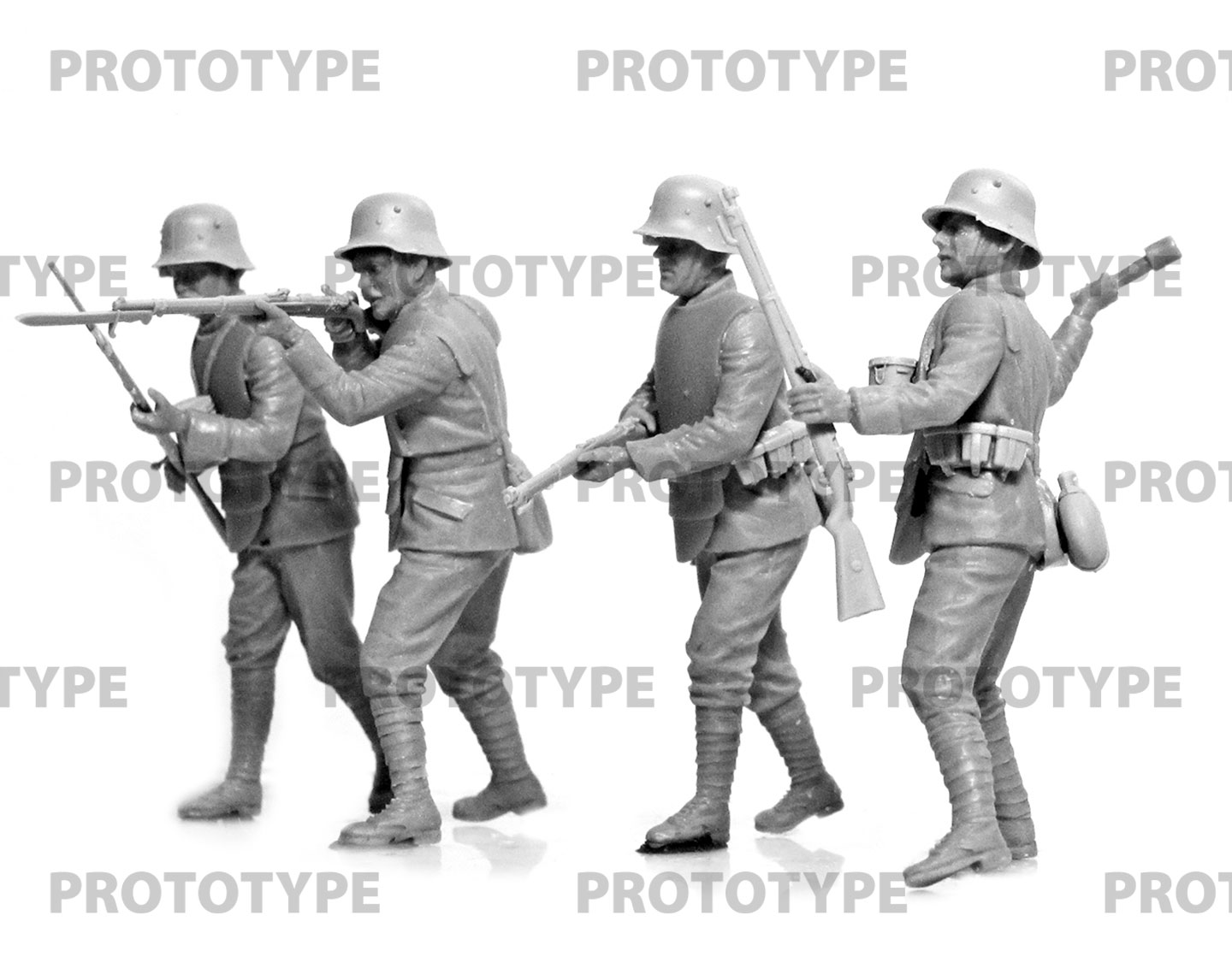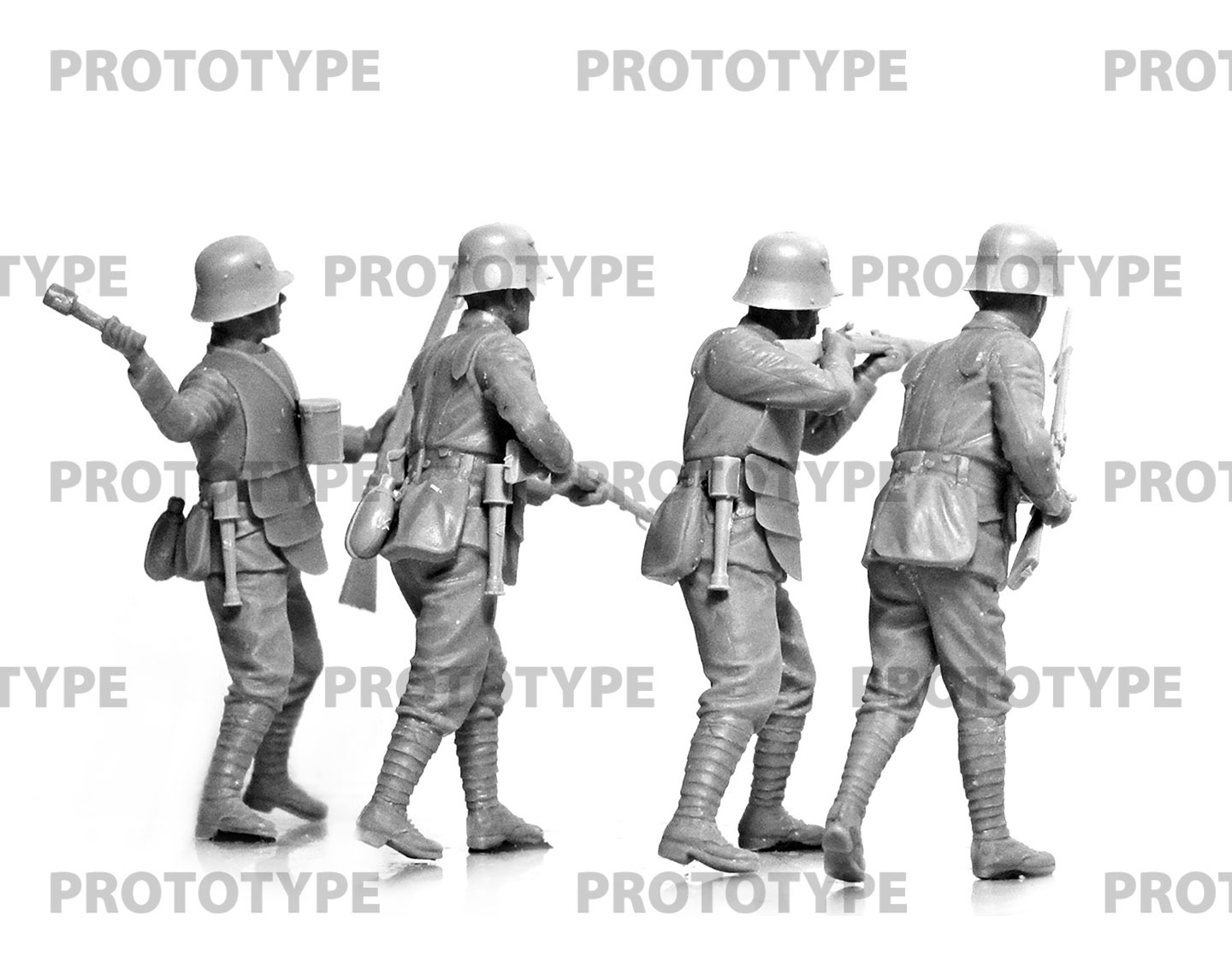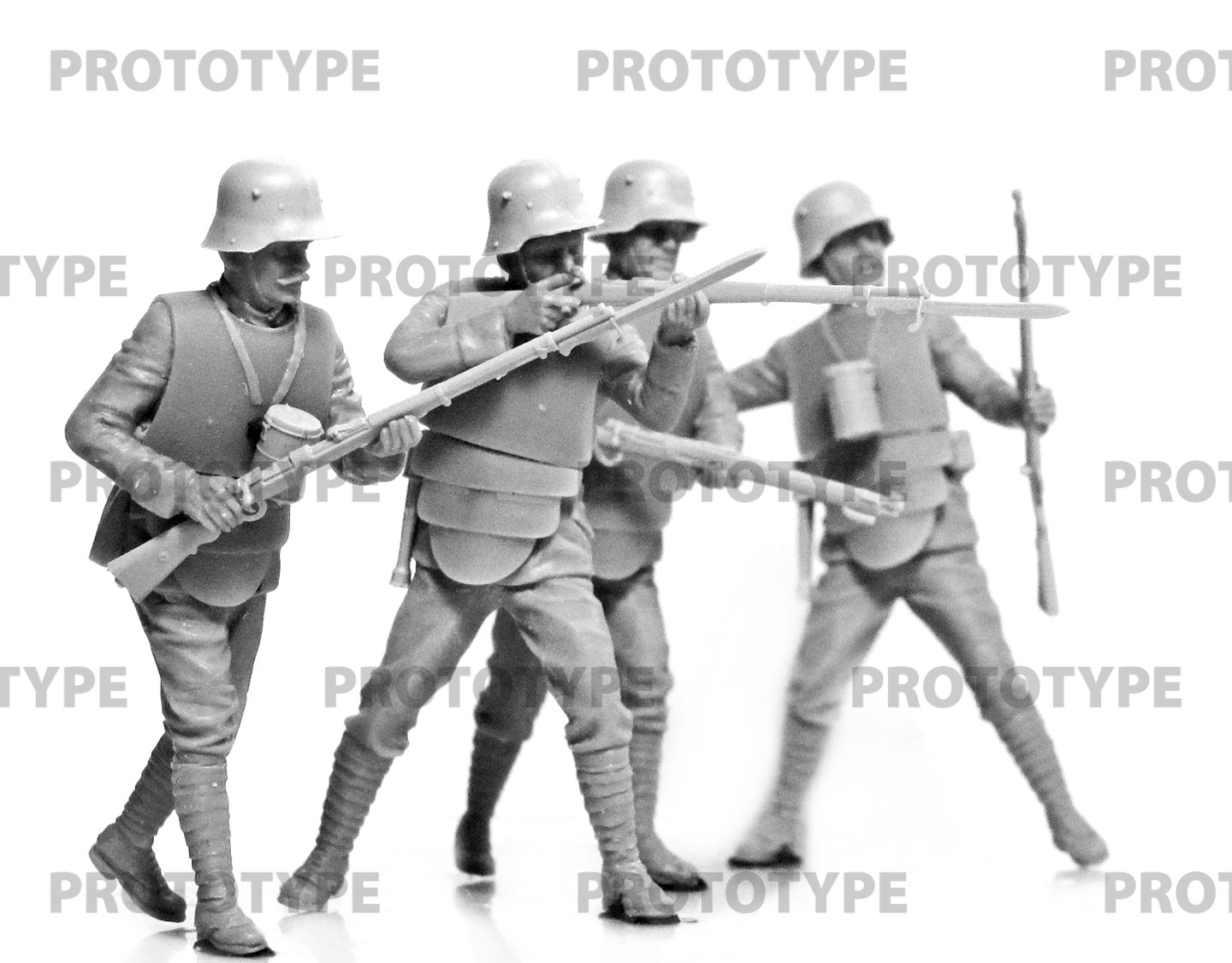WWI German Infantry in аrmor (100% new molds) 1/35
14,95€
Only 1 left in stock

*Please check our Privacy Policies to see how to we use your personal data.
*Por favor revisa nuestra Política de Privacidad para ver como tratamos tus datos personales
SCALE
1:35
TIME PERIOD
WW1
BOX SIZE
247 x 183 x 33 mm
NUMBER OF DETAILS
49
During the First World War, the positional nature of hostilities and the high saturation of combat formations with machine guns and rapid-fire artillery forced them to look for ways to protect soldiers individually. In the German army, shells made of multicomponent steel became such protection. The release of this armor, also known as the Grabenpanzer, began in the spring of 1916. The weight of these shells reached about 10 kg, and its armor thickness was about 3 mm. The structure consisted of four plates connected by straps, which in turn gave the armor some mobility. Grabenpanzer was quite effective in protecting against pistol bullets and projectile fragments, and in part against bullets fired from rifles. The production of this armor continued until the end of the war, and the number of kits released, according to some estimates, reached about 500,000 copies.
ESCALA
1:35
PERIODO DE TIEMPO
PRIMERA GUERRA MUNDIAL
TAMAÑO DE LA CAJA
247 x 183 x 33 mm
NÚMERO DE DETALLES
49
Durante la Primera Guerra Mundia, la naturaleza posicional de las hostilidades y la gran saturación de las formaciones de combate con ametralladoras y artillería de tiro rápido obligaron a buscar formas de proteger a los soldados individualmente. En el ejército alemán, los proyectiles de acero multicomponente se convirtieron en esa protección. El lanzamiento de este blindaje, también conocido como Grabenpanzer, comenzó en la primavera de 1916. El peso de estos proyectiles alcanzaba unos 10 kg, y su grosor de blindaje era de unos 3 mm. La estructura consistía en cuatro placas conectadas por correas, que a su vez daban al blindaje cierta movilidad. El Grabenpanzer era bastante eficaz en la protección contra las balas de pistola y los fragmentos de proyectil, y en parte contra las balas disparadas desde rifles. La producción de este blindaje continuó hasta el final de la guerra, y el número de kits lanzados, según algunas estimaciones, alcanzó unos 500.000 ejemplares.



